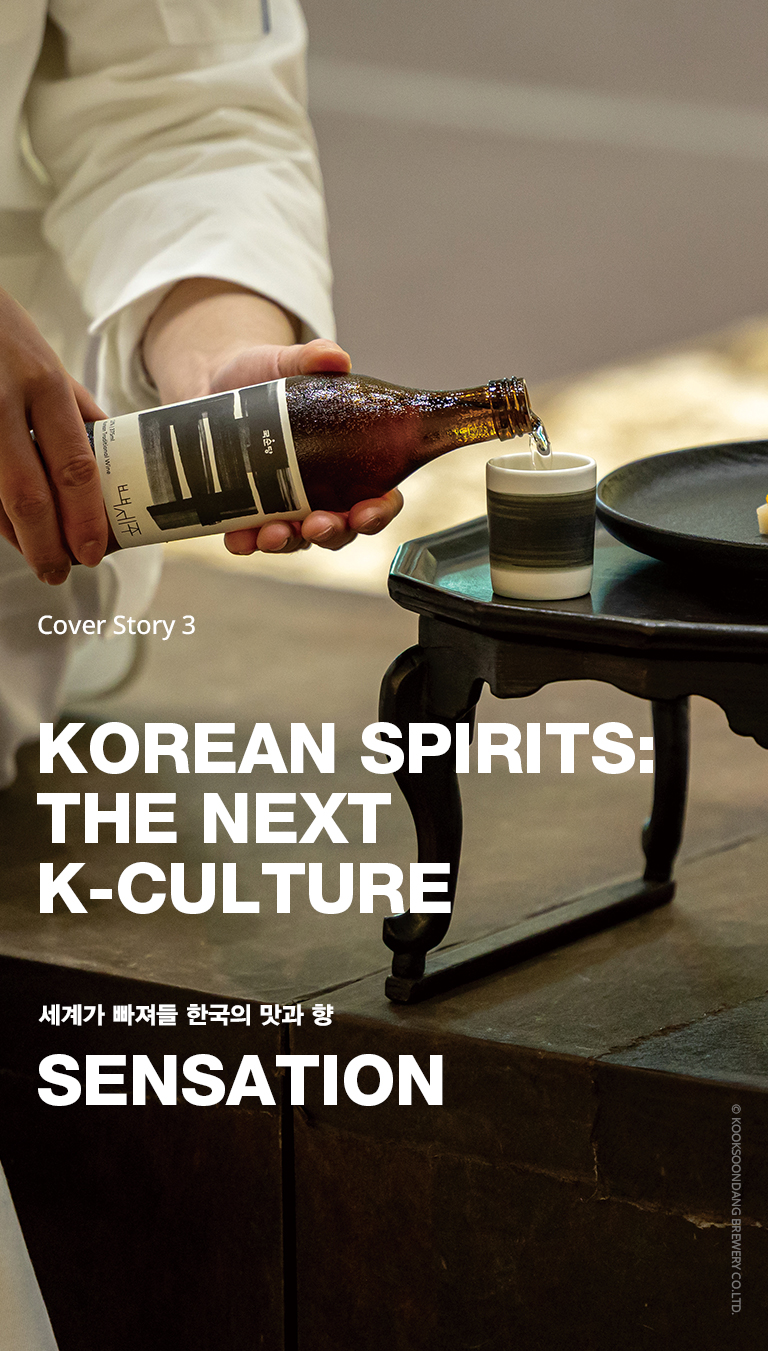
Korean alcoholic beverages are gaining global recognition for their rich history and unique brewing techniques. Their cultural significance, market presence and future potential are worth noting.
세계가 한국 술의 풍부한 역사, 독특한 양조 기술을 눈여겨 보고 있다. 한국 술의 문화적 중요성, 시장에서의 입지, 미래 잠재력은 주목할 만하다.
Writer. Myeong Uk
The recent buzz around BTS member Jin’s alcohol release “IGIN” has sparked increased interest in Korean alcoholic beverages, particularly traditional ones. But what exactly are these Korean alcoholic drinks that are capturing global attention, and how do they differ from alcoholic beverages from other countries?
Korean alcoholic beverages have long been perceived as affordable and accessible, with popular options like soju (distilled liquor) and makgeolli (unrefined rice wine) dominating public awareness. However, a significant shift is underway as researchers uncover historical texts from periods like the Joseon Dynasty, revealing the sophisticated alcoholic beverages enjoyed by Korean ancestors.
This rediscovery has inspired numerous breweries to embark on restoration projects to recreate these traditional premium spirits. Many alcoholic beverages documented in ancient literature are now being reborn for modern consumers. The trend has gained substantial momentum as Michelin-starred restaurants have begun pairing premium Korean spirits alongside wine, enhancing the continued expansion and relevance of Korean alcohol in the fine dining scene. This movement extends beyond Korea’s major traditional restaurants to bars and specialized drinking establishments. Korean alcohol is increasingly recognized not merely as a beverage but as a cultural and artistic expression, gradually spreading throughout the culinary world and gaining appreciation both within Korea and internationally.
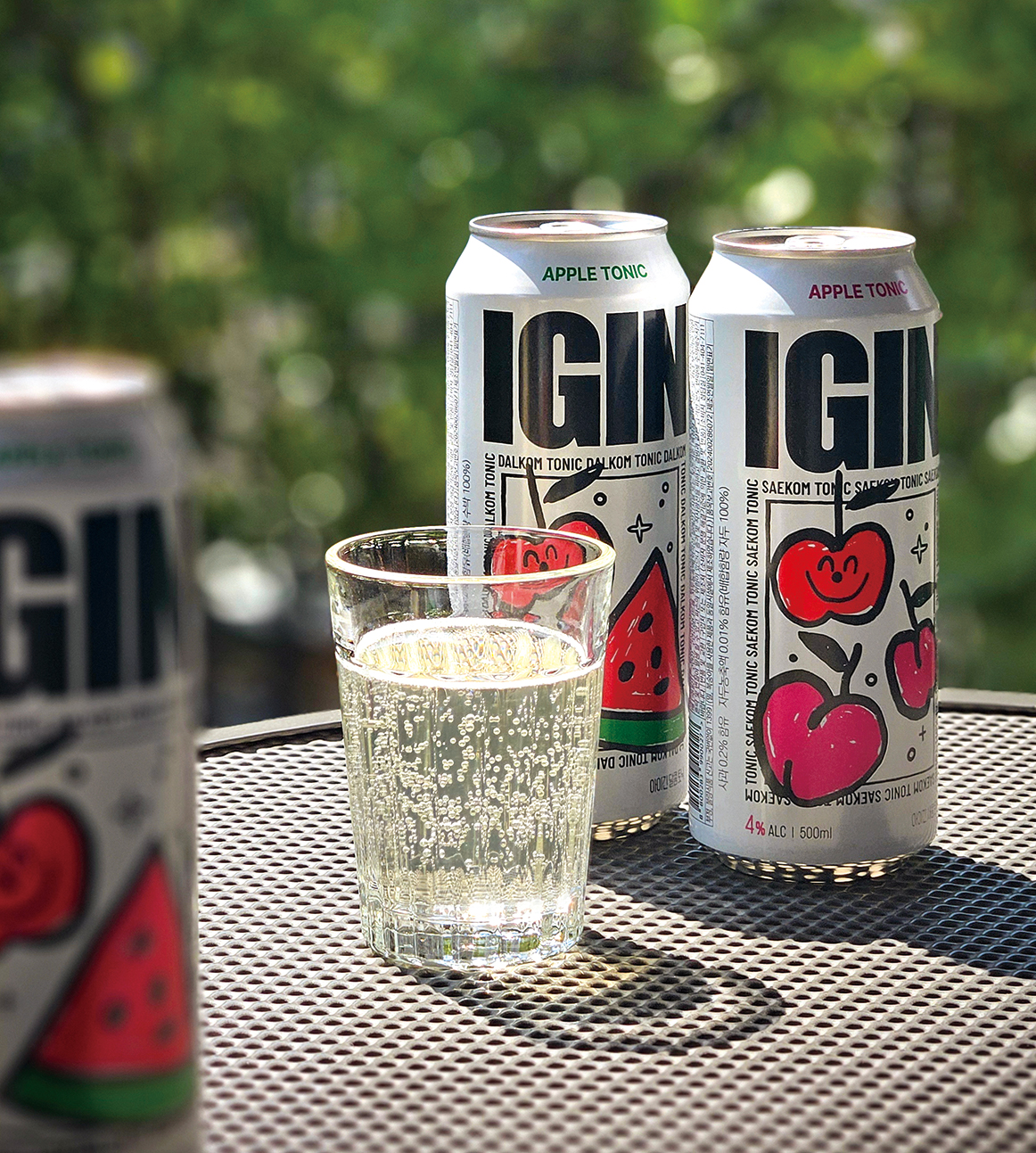 IGIN, a Korean liquor brand introduced by Jin of K-pop group BTS, showcases products made with apples, a specialty product from Yesan-gun County, Chungcheongnam-do Province.
IGIN, a Korean liquor brand introduced by Jin of K-pop group BTS, showcases products made with apples, a specialty product from Yesan-gun County, Chungcheongnam-do Province.
The most distinctive features of Korean alco-holic beverages lie in their use of natural ingredients, preservation of traditional fermentation and distillation techniques, and unique regional characteristics. Korea boasts a variety of fermented drinks including makgeolli, cheongju (refined rice wine) and yakju (traditional liquor made with medicinal herbs), each with a character distinct from Japanese sake or European wines. Many regions produce creative spirits using local specialties, such as apple distilled spirits from Yesan, rice soju from Andong and omegisul made from millet in Jeju Island.
Korean alcoholic beverages often reflect seasonal elements in their creation. Spring brews incorporated azaleas, summer recipes added alcohol to enhance preservation, autumn concoctions featured chrysanthemums for additional fragrance, and winter varieties underwent long aging processes to develop deep, rich flavors.
The traditional brewing methods represent another differentiating factor for Korean alcohol. Most traditional Korean spirits are not mass-produced but rather crafted by artisans, resulting in profound flavor profiles. They hold special significance as beverages traditionally brewed by mothers at home, with recipes carefully documented through generations. This highlights how Korean alcohol functions not merely as a beverage but as a cultural element connecting families and communities.
Korean alcohol differs significantly from wine, sake, and whiskey. While wine uses grapes as its base ingredient, Korean spirits primarily utilize various grains such as rice, barley and sorghum, though some fruit-based varieties exist. Unlike wine, which requires aging, Korean alcohol allows for flexible aging processes and methods, producing a wider spectrum of flavors. Though Korean cheongju shares similarities with Japanese sake, Korean brewing employs nuruk (wheat-based fermentation starters) and can incorporate diverse grains. Additionally, while whiskey and brandy necessitate oak barrel aging, Korean spirits embrace flexible aging approaches with each brewery emphasizing its distinctive character.
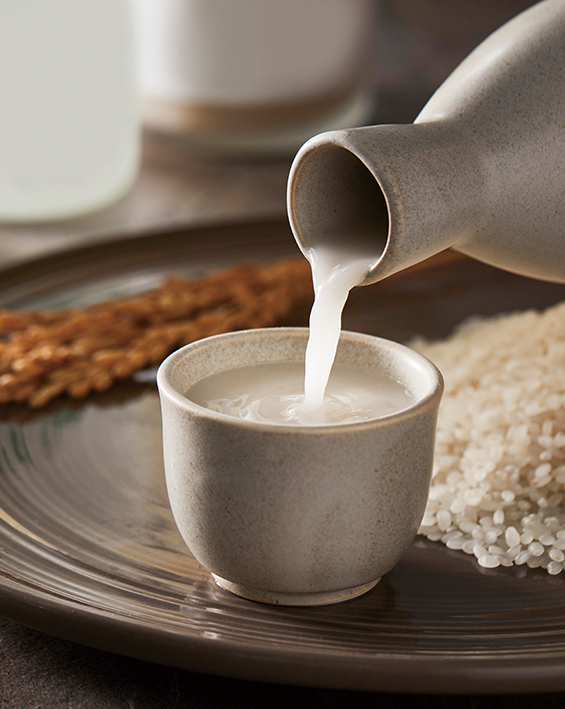 Takju, the milky sediment that forms when rice, water and nuruk are fermented and aged.
Takju, the milky sediment that forms when rice, water and nuruk are fermented and aged. 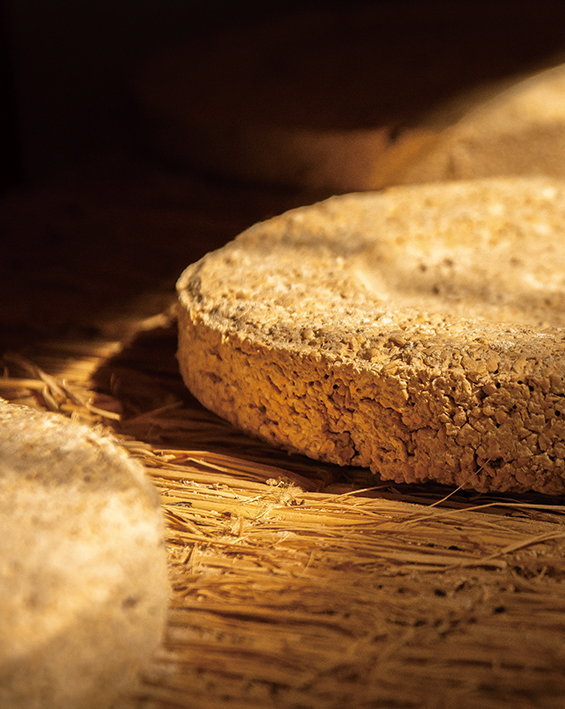 Nuruk, a fermentation starter used in brewing alcohol, is made by cultivating
Nuruk, a fermentation starter used in brewing alcohol, is made by cultivating
Korean alcohol’s depth can be traced to its very etymology. The Korean word for alcohol, sool, is believed to derive from subul. In this term, su means water, and bul means fire. This etymology poetically captures the fermentation process where carbonation creates bubbles that appear like fire rising through water. This naming suggests that alcohol embodies the harmony of opposing elements—water and fire—coming together in balance.
Makgeolli combines mak (meaning “just now” or “directly”) and georeuda (to filter), translating to “freshly filtered alcohol.” Its freshness is often emphasized by consuming it as saeng-makgeolli (raw or fresh makgeolli), similar to draft beer.
Yakju carries dual meanings: either “alcohol precious enough to be medicine” or “alcohol that actually serves as medicine,” as yak means medicine in Korean. Historically, medicinal ingredients were often added to enhance preservation, contributing to the concept of yakju.
Cheongju means clear alcohol, made by refining and filtering makgeolli, then aging it. Due to these characteristics, it’s sometimes called “rice wine” in English.
Soju combines so (meaning “to burn”) and ju (alcohol), literally meaning “burnt alcohol” or distilled spirits. This name originates from the distillation process used to extract alcohol, similar to the etymology of “brandy,” which comes from “burnt wine.”
 Photos from the ‘SOOL SOOL’ Korean traditional liquor pop-up store organized by the Korean Ministry of Agriculture, Food and Rural Affairs and the Korea Agro-Fisheries & Food Trade Corporation in April 2024. © Korea Agro-Fisheries & Food Trade Corporation.
Photos from the ‘SOOL SOOL’ Korean traditional liquor pop-up store organized by the Korean Ministry of Agriculture, Food and Rural Affairs and the Korea Agro-Fisheries & Food Trade Corporation in April 2024. © Korea Agro-Fisheries & Food Trade Corporation.
The recent surge in popularity of Korean alcoholic beverages can be attributed to several factors: the global spread of Hallyu (Korean Wave), their established image as premium products, health and wellness trends and the development of Korea’s alcohol industry. As K-pop, K-dramas and Korean cuisine gain worldwide popularity, Korean alcoholic beverages have naturally attracted attention alongside them.
Unlike in the past, traditional Korean spirits now position themselves as premium products, enhancing their value by integrating with fine dining culture. Beverages produced through natural fermentation and healthy ingredients particularly appeal to wellness-conscious consumers. These market developments are supported by active investments and marketing efforts from both government agencies and private companies.
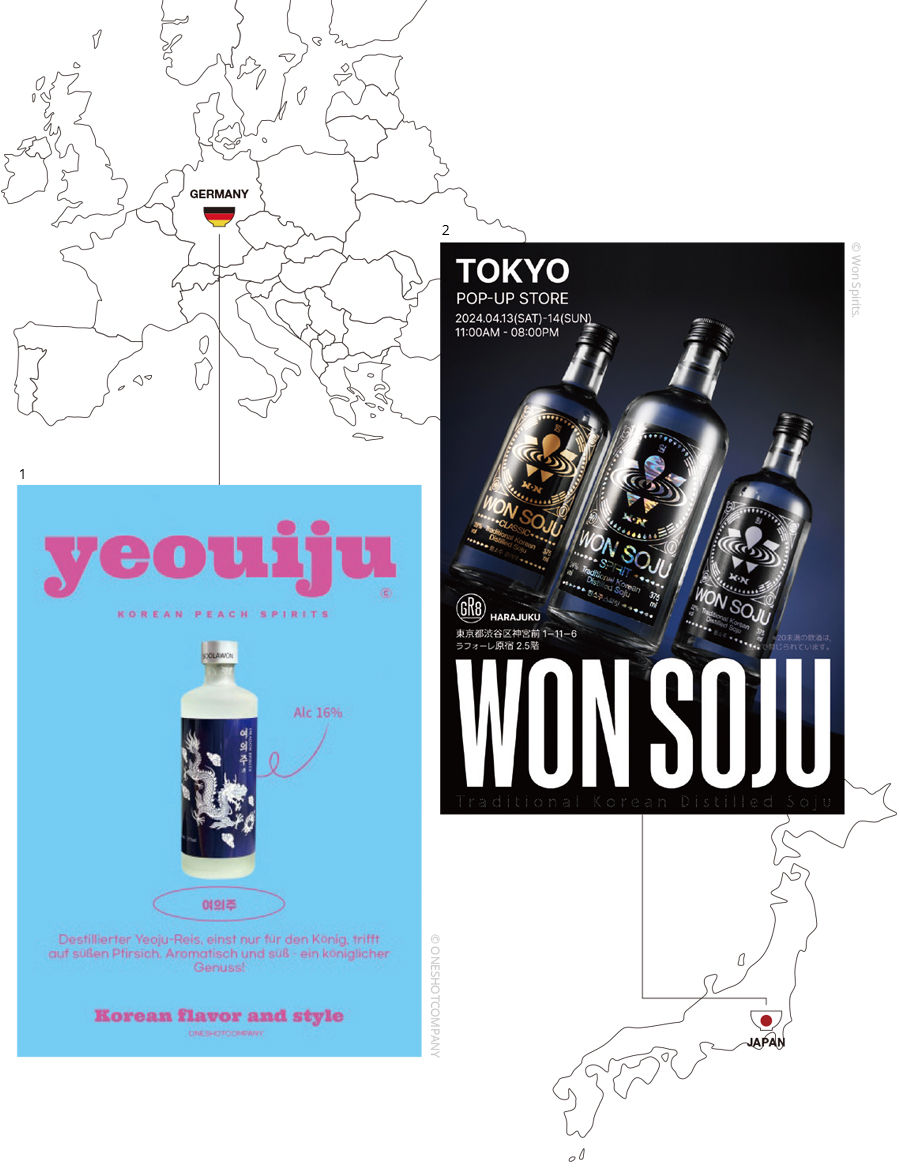 1. Promotional poster for ‘Yeouiju’ in Germany, produced by ONESHOTCOMPANY which exports Korean liquor overseas
1. Promotional poster for ‘Yeouiju’ in Germany, produced by ONESHOTCOMPANY which exports Korean liquor overseas
2. Tokyo pop-up poster for Won Soju, a Korean traditional soju brand
Experts predict continued expansion of the Korean alcohol market. With increasing recognition in overseas markets, premium Korean spirits having strong potential to establish themselves as a distinct category in the global marketplace. Korean alcoholic beverages are gradually gaining popularity in American, Japanese and European markets, with further expansion expected to additional countries. As consumer preferences diversify, various types of Korean spirits beyond just soju and makgeolli are receiving attention. Furthermore, the combination of modern brewing techniques with traditional fermentation methods is producing spirits with more sophisticated flavors and aromas. Thanks to these developments, Korean alcoholic beverages have recently gained recognition for their sophistication and originality, even winning awards at prestigious global beverage exhibitions. Their international profile is expected to continue rising.
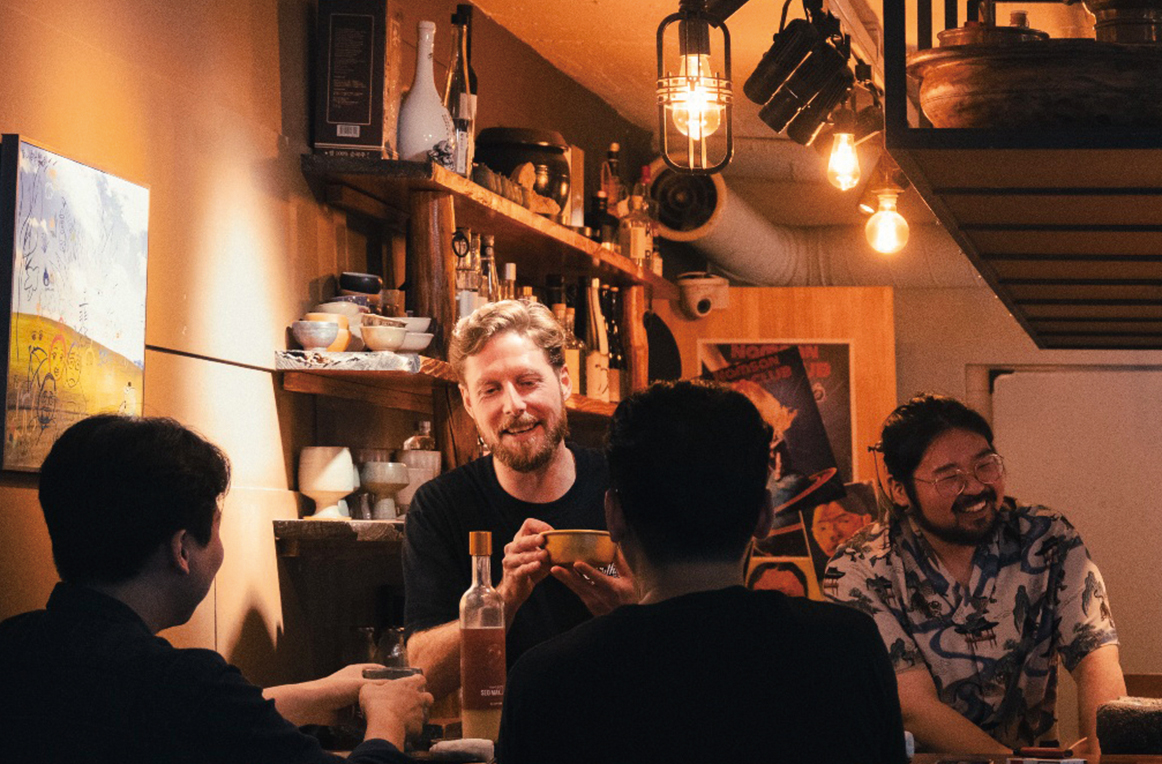 Images of Namsan Sool Club in Yongsan-gu District, Seoul, which sells Korean traditional alcoholic beverages. © Namsan Sool Club.
Images of Namsan Sool Club in Yongsan-gu District, Seoul, which sells Korean traditional alcoholic beverages. © Namsan Sool Club.
Writer. Myeong Uk
Currently serving as an adjunct professor in the Barista & Sommelier Department at Sejong Cyber University, the author previously held the position of chief professor for the Culinary Culture Advanced Program at Sookmyung Women’s University. His published works include “The Alcoholic Sorrows of Young Werther,” “Drink Talk Between Men and Women,” and “The Alcoholic Wonders of World History.”